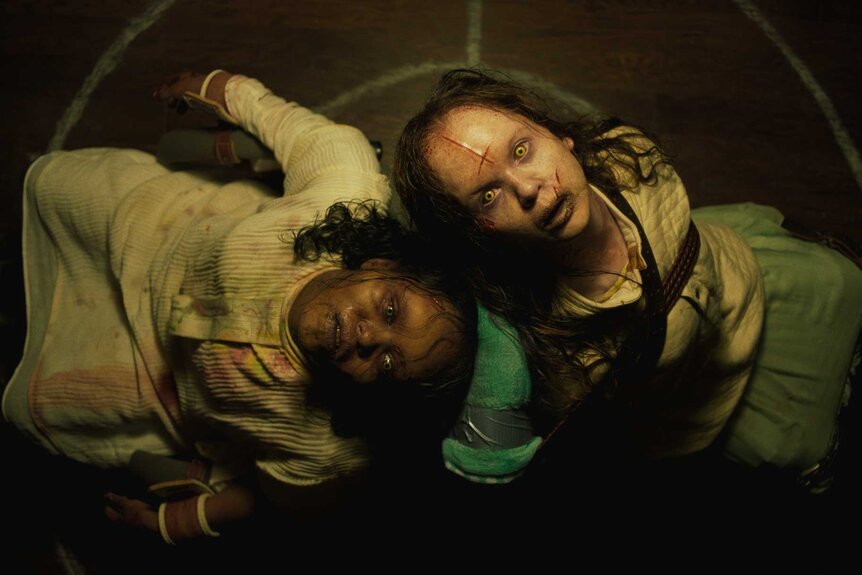Create a free profile to get unlimited access to exclusive videos, sweepstakes, and more!
How The Possession in The Exorcist: Believer Is Different From The Original Film
"Expanding the conversation of possession" gives us all something to think about.
Five decades ago, “Father Karras” read the Roman rites over a possessed child played with frightening intensity by Linda Blair — and it kicked off the public’s fascination with The Exorcist franchise. The mysterious ritual to cast out evil spirits is commonly associated with Christianity in modern culture.
In fact, the 1971 novel by William Peter Blatty that inspired the movie was based on a real-life 14-year-old boy who underwent a Catholic exorcism (it held the number one spot on The New York Times Best Seller list for 17 weeks). However, this is only part of the picture. Exorcism is a practice that has an ancient history in many religious traditions, which director David Gordon Green set out to capture in The Exorcist: Believer.
The Exorcist: Believer Offers a New Perspective on Possession
In the new Exorcist movie, Green gives us a way to look at possession that favors a broader worldview. “You realize in the research how many cultures, how many ceremonies, and how many rituals there are to deal with possession… all the various cultures and spiritual perspectives, root work and others,” he told NBC Insider.
RELATED: How Exactly Did Linda Blair Contribute To The Exorcist: Believer As Technical Advisor?
These varying approaches “become a great tool of conflict for our narrative,” Green added. And so, he scales back the male-centered Catholic system in favor of a more inclusive approach. In the movie's exorcism scene, laypeople, including a former nun (Ann Dowd) who had broken her vows, are pitching in. But most notable is the African priestess, Dr. Beehibe (Okwui Okpokwasili), who pulls in the audience with her root magic and steals the scene.
In Believer, it’s not one soul at stake, it’s two — and though both girls live in the same Georgia town, they have different backgrounds and perspectives. Angela is the daughter of single black dad, Victor Fielding (Leslie Odom, Jr.), who lost his wife in a Haitian earthquake. The other possessed girl is Katherine, whose parents are traditional Southern white Catholics. Having two possessed characters means more opportunities for the classic gross-out moments that audiences expect, but it’s not all about demonic groaning and projectile vomit.
Director David Gordon Green on Why The Exorcist: Believer Will Make Audiences Think
Green describes how he used synchronized possession to modernize the concept of exorcism. “You start looking at the fracture between two families dealing with a possessed daughter. It’s not that different from people with an ailing child with some mysterious illness at a hospital and trying to balance where the spiritual world meets the medical world and where their faith or lack of faith might come into play with their decisions,” he said.
RELATED: How to Get Tickets For The Exorcist: Believer, Plus IMAX Details
A shared goal of saving the girls results in a shaky coalition among the movie's different families and faith healers. It’s perhaps not so far off from what takes place in other realms of real life (fingers crossed, it’s not possession). “These are conversations that you have in your community,” said Green. “I have them in my community, some people have it within their churches or within their schools, or within their households. I think those types of conversations are very realistic, very common, and are ripe for drama for our film.”
Green continued: "Expanding the conversation of possession to a broader canvas, that’s what is exciting for me. To make a movie that’s not just popcorn entertainment.” Horror fans will get their thrills, and there’s plenty of conflict and drama, but as Green put it, “If you want to watch a movie that gives you something to think about and talk about, this is also your film.”
The Exorcist: Believer is in theaters now. Get tickets at Fandango.


























